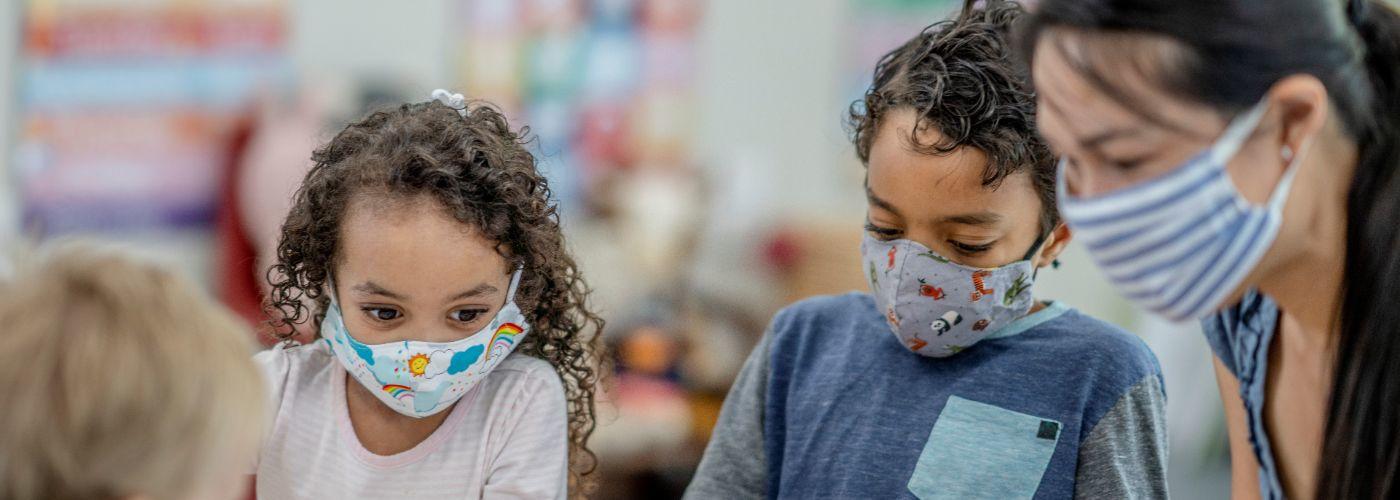
Choose Safe Places is a voluntary program for early care and preschool education providers to identify and address potential environmental concerns at or around child care facilities to protect children and staff from harmful substances in their environment.
We can help child care facilities be environmentally safe by helping identify safe locations for new child care. This is achieved by proactively identifying new and existing facilities that could be affected by hazardous chemicals, thereby reducing potential exposures.
The places where children learn and are cared for should be safe from pollution.
When property was used for manufacturing, industry or agriculture, hazardous chemicals can remain in buildings or on the land. Children could be exposed to these contaminants in the soil while playing. In addition, if a nearby businesses (such as a dry cleaner, nail salon, or auto body shop) uses chemicals, the indoor environment of the day care may be affected by the chemicals.
Assessing past use of the property may prevent this type of exposure.
Exposure to harmful substances may cause an increased risk of illness. Chemical hazards are often more serious threats to children. According to the Agency for Toxic Substances and Disease Registry (ATSDR), children are more likely to experience adverse health effects due to environmental exposure for several reasons.
- Children's developing bodies can be particularly sensitive to toxic exposure during certain critical growth stages, especially when children are exposed to chemicals known to cause developmental effects.
- Children weigh less than adults. As a result, when children and adults swallow or inhale the same amount of chemicals, children receive a greater dose than adults.
- Young children often put things in their mouths.
- Because children often play outdoors and on the ground, they are more likely than adults to come into contact with contaminated soils by eating soil and breathing in airborne pollutants.
Safe siting for child care facilities looks at four elements:
- Former uses of the site that may have left behind harmful substances.
- Migration of harmful substances on to the site from other nearby sites.
- Nearby manufacturing operations or activities that may use hazardous chemicals.
- The presence of naturally-occurring contamination, and access to safe drinking water.
While it may not be possible to eliminate all exposures, thoughtful consideration and mitigation of these four key elements helps ensure that exposures to harmful substances do not reach unsafe levels.
When sites have been used for other activities, consider:
- Prior activities on site that could have contaminated the inside of buildings on the property.
- Examples: manufacturing or funeral home.
- Contamination of the outdoor environment on the property, such as soil, surface water, or groundwater.
- Examples: auto crushing, residual pesticides from past farming.
- Prior use, storage, or disposal of potentially hazardous substances on site.
- Examples: a junk yard or dump site.
- Existing or former structures on the property that contains or once contained harmful substances.
- Examples: storage shed, underground storage tanks.
- Physical hazards.
- Examples: abandoned wells or debris.
- Potentially hazardous building materials in structures on the site.
- Examples: asbestos insulation, lead-based paint.
- Use of contaminated fill on the site anytime in the past.
- Examples: soil contaminated with pesticides or soil from nearby older buildings or roads.
- Vapor intrusion of chemical contaminants in groundwater or soil from past activities on the site.
- Example: dry cleaners.
Consider nearby sites:
- Designated hazardous sites. Examples: Superfund sites, state-listed sites, Brownfields properties, other hazardous waste sites.
- Nearby business, service, or facility that might release hazardous materials into the environment. Examples: auto repair, nail salon, agricultural pesticide use.
- Transportation infrastructure that could result in a greater risk of hazardous exposures. Examples: rail routes carrying harmful substances, transportation transfer points, trucking facilities.
- Threats posed by chemical contaminants migrating on-site via run-off, flooding, wind erosion, or vapor intrusion.
The focus of this initiative is licensed child care facilities not located in private homes. These facilities are generally located in commercial structures in non-residentially zoned (or mixed residentially zoned) areas. In contrast, family-based day cares are generally operated in homes in residentially-zoned areas. Thus, family-based day cares are less likely than child care facilities to be located on properties with a past industrial use. Family-based day cares are also less likely to be located within the same building or immediately adjacent to an operating business, such as a nail salon or auto body shop, that could cause harmful exposures.
Fill out our property questionnaire to help you review the history of your building. If it was ever used for other purposes, such as a dry cleaner or funeral home, gather more information about the site, including information about any clean-up or sampling. Or, consider a different site. Take a look at your neighbors. If you are sharing a strip mall with a dry cleaner or nail salon, make sure you do not use the same air circulation system. Shared air could bring vapors or odors into your childcare facility. Return the questionnaire to us, and we can help you assess the property.